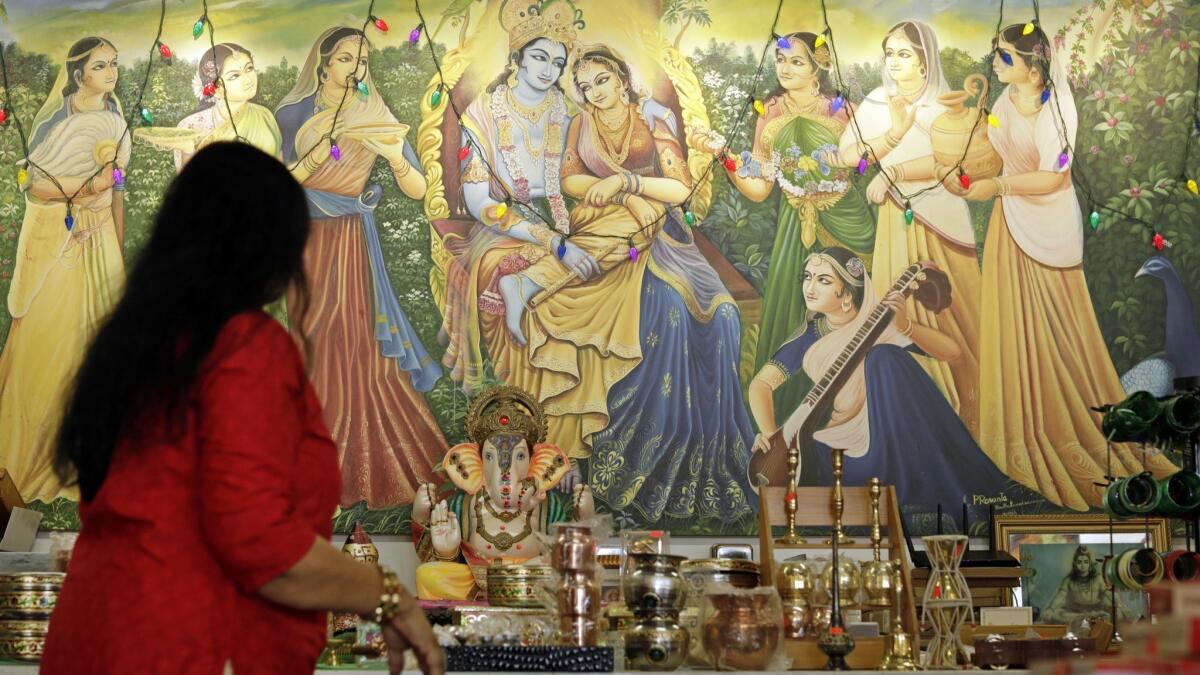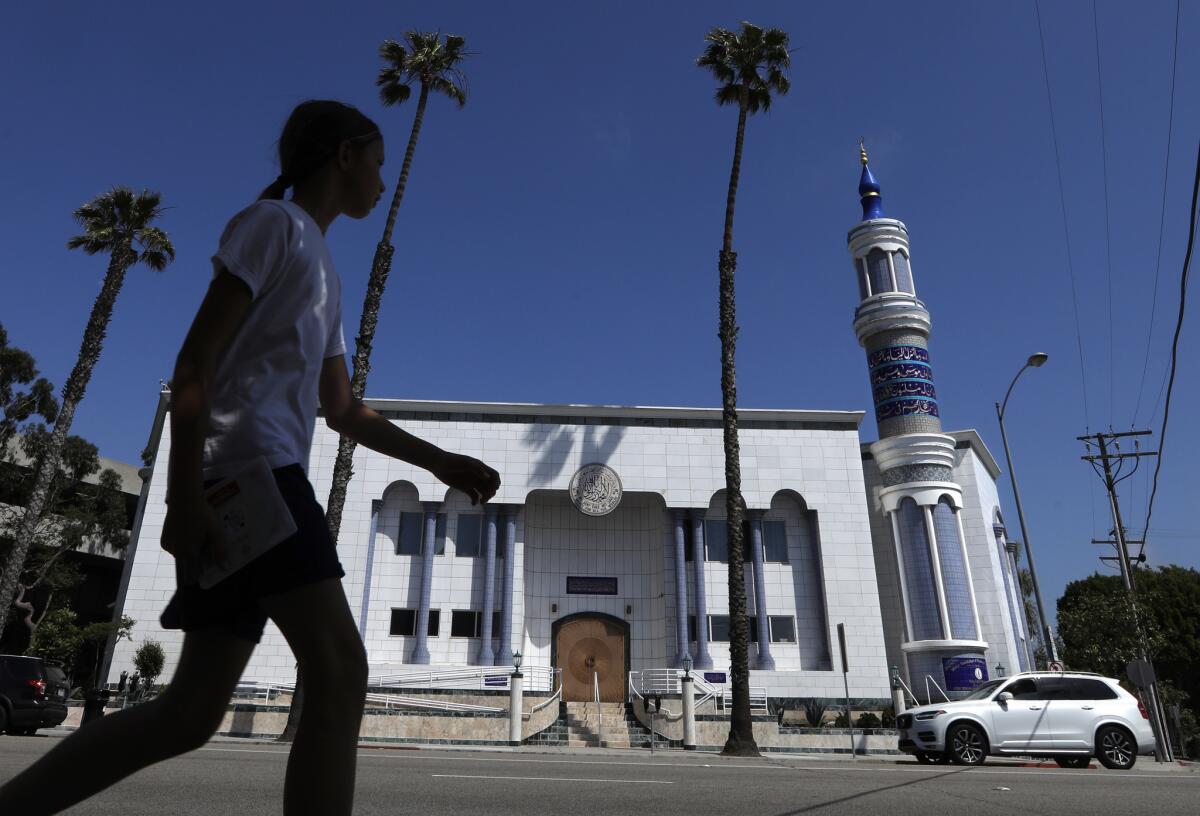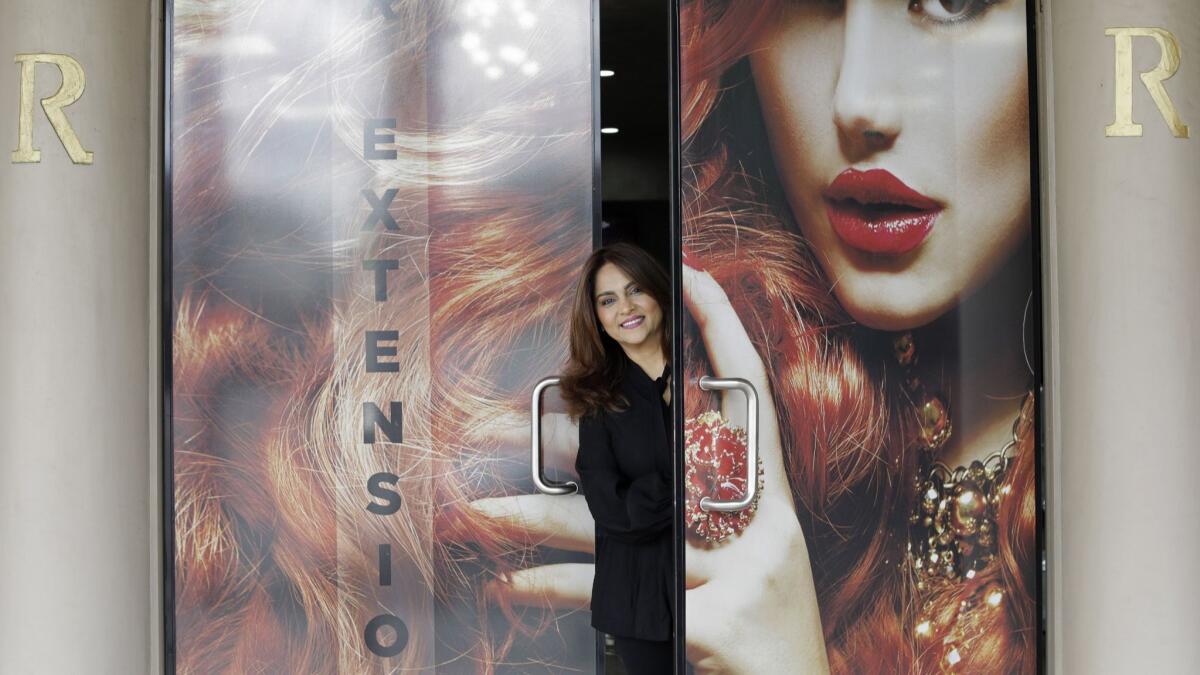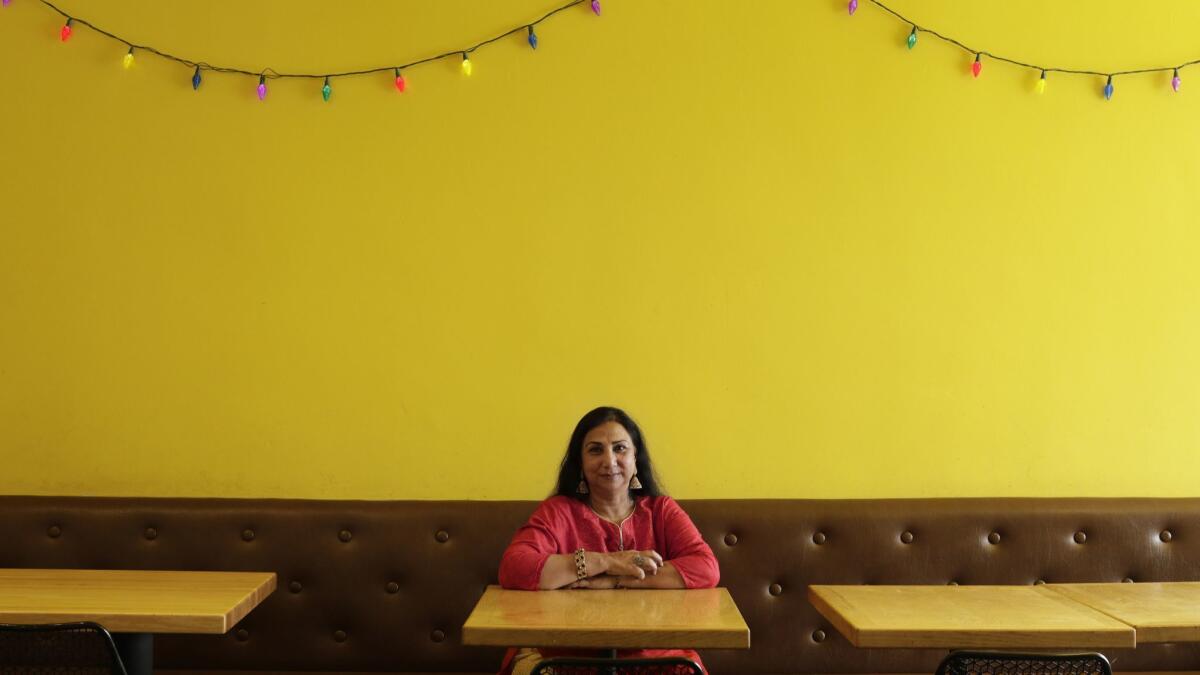Column: How Venice Boulevard keeps South Asian culture alive in Los Angeles

If you’ve ever been to Venice Boulevard in June or July, you might notice mangos stacked conspicuously in boxes outside the South Asian grocery stores that line the street.
The boxes mark the seasonal start of a fierce, but typically respectful competition in a community where passions for mangos run deep.
Grocers field calls from regular customers testing the coin of their relationships, and hear from family and friends trying to reserve boxes. Favors are collected, promises made and broken. Indian mangos — and no other kind will serve — must be flown in at great cost and shopkeepers stock them in limited numbers for just two months during the summer.
For the victorious, there’s the Alphonso mango — rich, creamy amber flesh with golden-yellow skin lightly touched with red. If you look hard and know the right people, you can obtain Kesar mangos, with mellow green-yellow skin and bright orange flesh.
For many South Asian immigrant families, this is home: mangos with fiber-free flesh, fist-sized eggplants with jagged stripes, basmati or jasmine rice by the pound, spices at a lower price point, flavorful sattvik meals made without garlic or onions or root vegetables.
All of these can be found along Venice and Washington Boulevard near Culver City. About 12,000 South Asians live in the surrounding neighborhoods, according to a Times analysis of the most recent census data. Many are grad students from UCLA, or tech workers at Westside start-ups, or industry people from companies such as Sony and CBS.
It’s a different kind of community that’s connected more by culture and word of mouth than geographic proximity. Up to 40 South Asian-owned businesses, including about a dozen restaurants, dot Venice and Washington boulevards, less a cluster than a constellation.

The South Asian presence in the neighborhood dates back to the 1970s, when immigrants began to build temples and mosques in the area. The loosening of immigration laws in 1965 brought thousands of South Asians to Los Angeles, and the population grew from just 23,000 in 1980 to 116,000 in 2017.
Grocery stores and restaurants followed soon after to capitalize on the steady flow of South Asians to the area. Then came hair salons, clothing boutiques and DVD rental stores.
The neighborhood has no official name or branding, though if a South Asian person recommends “Palms” or “Culver City” they usually mean the South Asian part, said Anjali Belmann, 44, of Van Nuys.
When Belmann moved to Los Angeles in 1996, she had heard that Artesia had Indian stores, but it looked so far away on the map, especially in the days before GPS. Like many South Asians, she discovered the community in the Yellow Pages, where she found an advertisement for a threading business near her on Venice Boulevard.
“I thought, ‘This must be Indian,’” Belmann said.
The ad that Belmann found was for Rozina’s Beauty Salon, opened in 1989 by Rozina Piredina, an immigrant from Pakistan.

Piredina’s business initially drew many South Asians to Venice Boulevard because threading, an eyebrow care practice that originates in the Middle East and Asia, was only available at South Asian-owned salons. Her threading skills were featured in news broadcasts in the ’90s, and her store helped popularize threading in Los Angeles, she said.
“At that time nobody did threading, and people from all over L.A. came to me,” Piredina said.
More South Asians live in Artesia and Woodland Hills, but for many immigrants, Venice Boulevard was their first stop.
“People stay here and then when they become rich or whatever after four or five years, they move out and get a house,” said Thomas Simon, who emigrated from the Indian state of Kerala in 1997. “But once a week, lots of people come back, because here was the start where God first blessed you.”
And the community’s central location — at least relative to Artesia — meant that many Angelenos’ first encounters with Indian culture were along Venice or Washington Boulevard.
Simon owns India Sweets and Spices on Venice Boulevard, a restaurant chain now ubiquitous in South Asian communities across California. The location on Venice was the first India Sweets and Spices ever, he said, when it opened up in 1984 under a different owner.
And Samosa House on Washington Boulevard, when it opened up in 1979 as Bharat Bazaar, helped introduce the city to samosas, said Vibha Bojak, the current owner, who took over from her aunt in 2006.
Actor John Travolta was an early fan of her aunt’s samosas, Bojak said. When an article in the L.A. Times mentioned that, she remembers spending the next day frantically peeling potatoes as an enormous line formed outside.
“At that time, people really didn’t know what they were,” Bhojak said.

Bhojak is Jain, and her religion requires her to avoid root vegetables, such as the potatoes in her samosas. But she sells samosas in her restaurant because people like them. It’s the same for the Rajasthani and Gujarati-style thali-style meals she offers on the weekends.
Regional ethnic differences aren’t as big of a deal in the South Asian community along Venice because “in America everybody comes and changes their mindset,” Bhojak said.
On Venice, it’s not uncommon to find Pakistani hairdressers threading an Indian woman’s eyebrows, or Keralan restaurants offering biryani (typically a Muslim Indian dish), or South Indian restaurants with a display case of Bengali sweets.
In India, these cultural differences were more important, and Artesia’s denser, more populous Indian community reflects some of that, Bhojak said. But along Venice Boulevard’s looser community, many said they tend to focus on what they have in common.
“She’s from Pakistan and you’re from South India, but whatever, you know? She’ll watch your kids and it’s fine,” Belmann said.
Dispersed communities such as that around Venice are more common in an era when immigrants who arrive with education and money more often settle in far-flung suburbs. The end of practices such as redlining and racially binding housing covenants have allowed more immigrants to live where they want — and they’re not always interested in living among people of the same ethnicity.
Amid all this, it can sometimes feel like L.A.’s immigrant communities are just temporary landing zones that exist only as long as immigration continues apace. But as I walked Venice Boulevard last week, it was easy to see that food and culture still bring people together. But now I see communities that stay connected across ZIP Codes, that are maintained by choice, rather than forming as a response to discriminatory housing practices.
“For new immigrants it’s about feeling at home, and for later generations it’s about maintaining that connection to South Asian diet and lifestyle,” said Manjusha Kulkarni, the executive director of A3PCON, the Asian Pacific Policy and Planning Council. “If we didn’t have these stores, we couldn’t do that.”
Sonya Rao, 28, moved to the neighborhood six years ago, and she was delighted to find herself surrounded by South Asian grocery stores and restaurants, as well as Cuban and Salvadoran food and Brazilian culture.
Rao grew up in largely white communities in Pennsylvania. The Palms neighborhood has helped her form new connections to Indian culture. She gets haircuts at a South Asian-owned salon to a comforting soundtrack of old Bollywood movies. She recently bought an Instant Pot and began to work on perfecting dosa batter. She doesn’t have her own masala tin, but she’s thinking about getting one. Right now she makes do with spice packets.
Her food doesn’t always turn out exactly like her mother’s, but Rao can tell that she’s happy.
“At least you do something,” she tells Rao.
Times staff writer Ryan Menezes contributed to this report.
More to Read
Sign up for Essential California
The most important California stories and recommendations in your inbox every morning.
You may occasionally receive promotional content from the Los Angeles Times.










